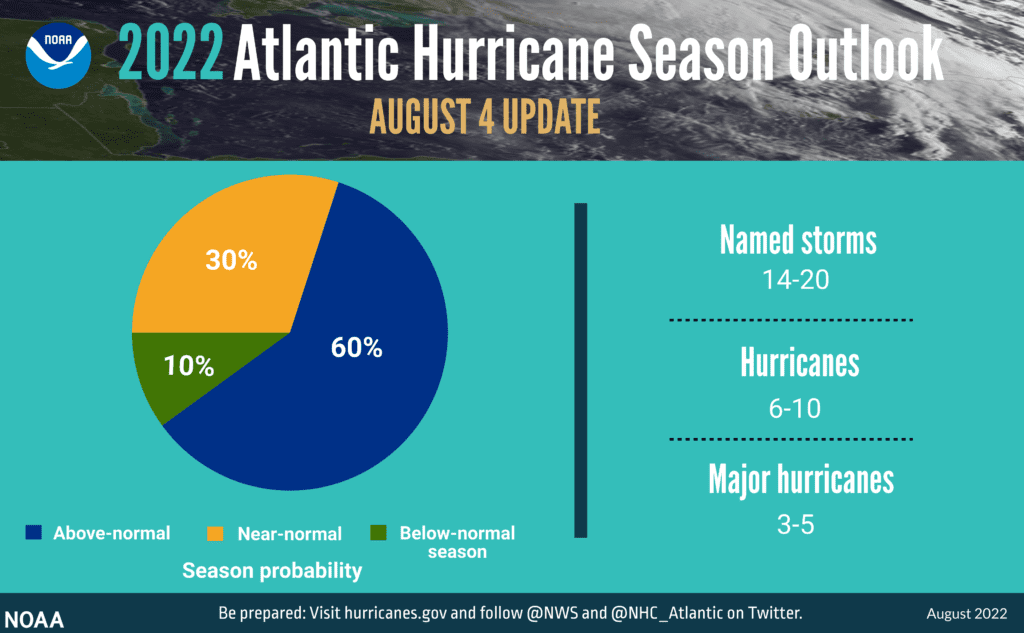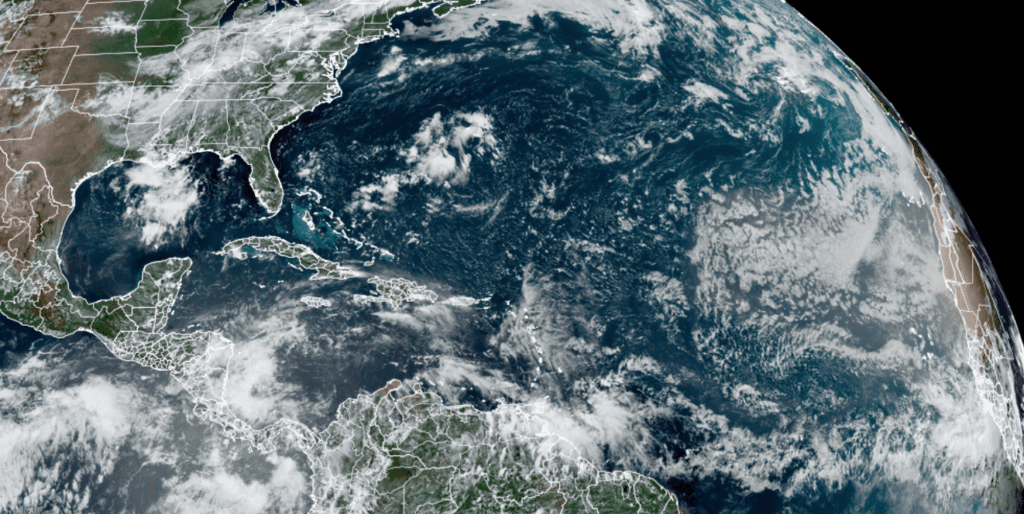NOAA’s forecasters are telling everyone to keep the faith; an above-normal Atlantic hurricane season is still expected. In an update issued Thursday, NOAA forecasters slightly decreased the likelihood of an above-normal Atlantic hurricane season to 60% (lowered from the outlook issued in May, which predicted a 65% chance). The likelihood of near-normal activity has risen to 30% and the chances remain at 10% for a below-normal season.

“We’re just getting into the peak months of August through October for hurricane development, and we anticipate that more storms are on the way,” said NOAA Administrator Rick Spinrad, Ph.D.“
NOAA’s update to the 2022 outlook — which covers the entire six-month hurricane season that ends on Nov. 30 — calls for 14-20 named storms (winds of 39 mph or greater), of which 6-10 could become hurricanes (winds of 74 mph or greater). Of those, 3-5 could become major hurricanes (winds of 111 mph or greater). NOAA provides these ranges with a 70% confidence.
So far, the season has seen three named storms and no hurricanes in the Atlantic Basin. An average hurricane season produces 14 named storms, of which seven become hurricanes, including three major hurricanes.
NOAA’s outlook is for overall seasonal activity, and is not a landfall forecast. Landfalls are largely governed by short-term weather patterns that are currently only predictable within about one week of a storm potentially reaching a coastline.
According to NOAA forecasters, there are several atmospheric and oceanic conditions that still favor an active hurricane season. This includes La Niña conditions, which are favored to remain in place for the rest of 2022 and could allow the ongoing high-activity era conditions to dominate, or slightly enhance hurricane activity. In addition to a continued La Niña, weaker tropical Atlantic trade winds, an active west African Monsoon and likely above-normal Atlantic sea-surface temperatures set the stage for an active hurricane season and are reflective of the ongoing high-activity era for Atlantic hurricanes.
“Although it has been a relatively slow start to hurricane season, with no major storms developing in the Atlantic, this is not unusual and we therefore cannot afford to let our guard down,” said FEMA Administrator Deanne Criswell. “This is especially important as we enter peak hurricane season—the next Ida or Sandy could still be lying in wait.
As of Thursday afternoon, weather conditions across the tropical Atlantic remained very quiet, with no tropical waves or disturbances in place which could develop into a tropical cyclone. But stay tuned as this situation could change quickly in another week to ten days.

NOAA/Colorado State University/RAMMB 08/04/2022 1:20 pm CDT
Bob


Social Media